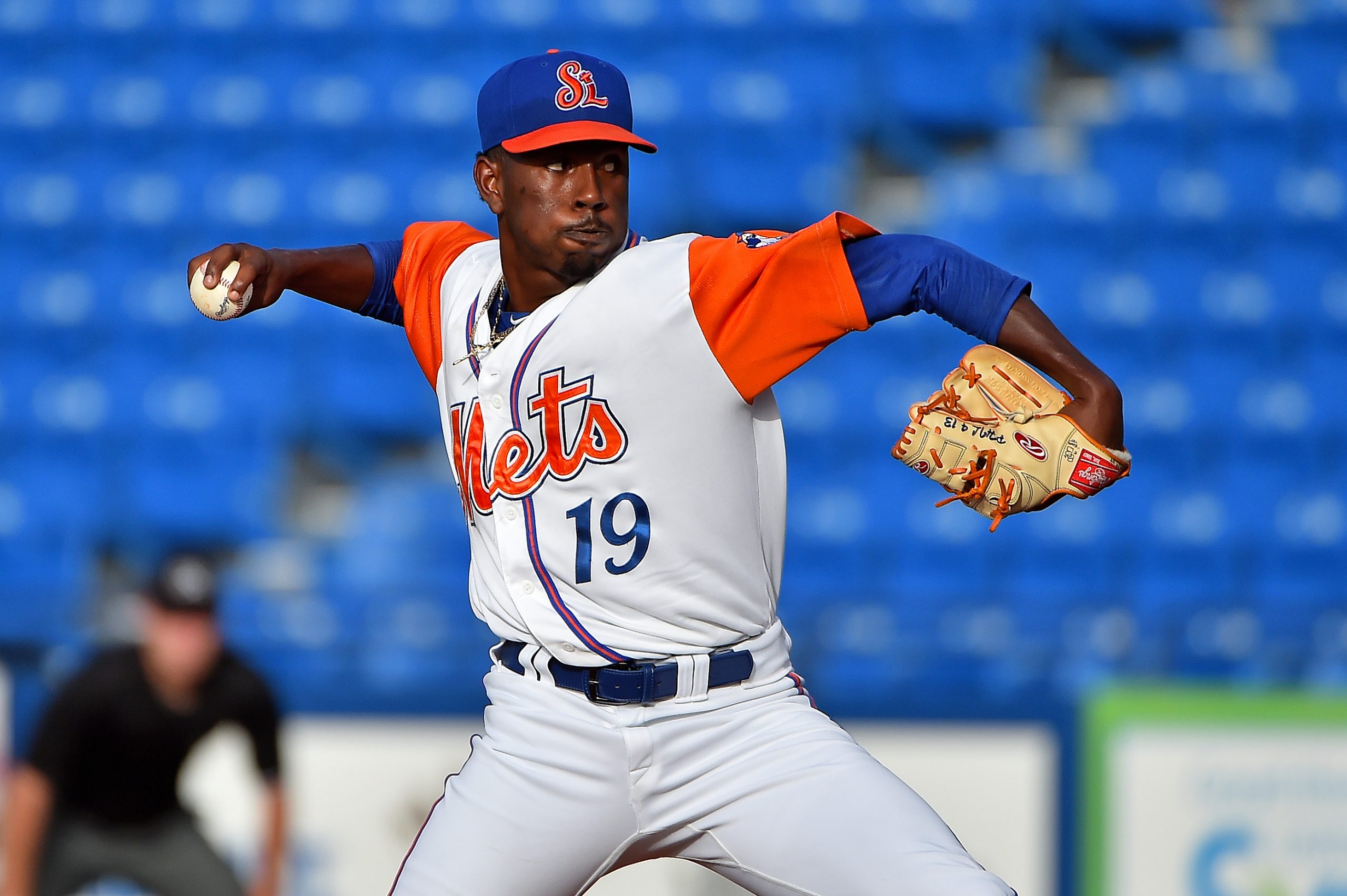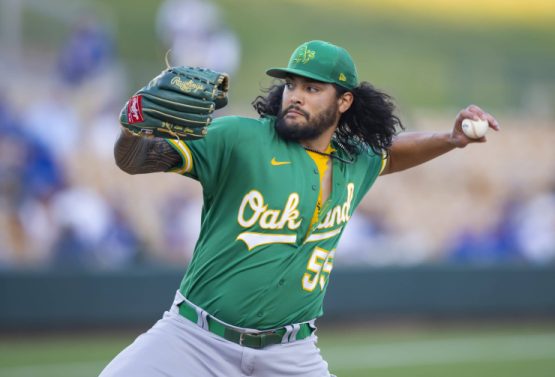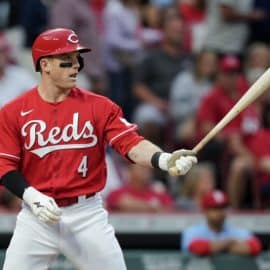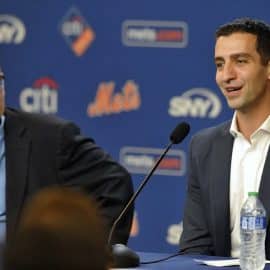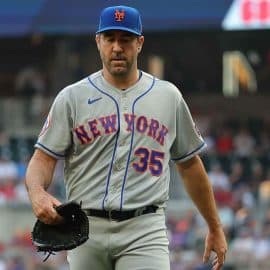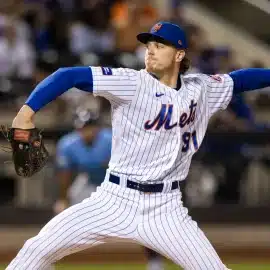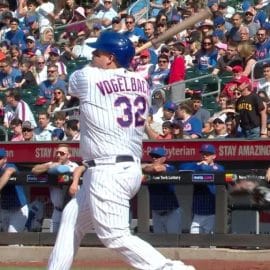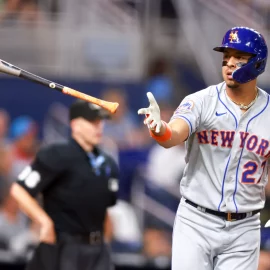One of the big criticisms of former New York Mets’ General Manager Sandy Alderson was the decay of the organization’s farm system. The Mets’ farm system, which produced quality big leaguers such as Jacob deGrom and Michael Conforto early in Alderson’s run, fell to a bottom ten group over the past few years due to a combination of poor drafting and player development. The system began to make a turnaround this season thanks to an infusion of young talent, and new GM Brodie Van Wagenen appeared to double down on that improvement by importing Allard Baird and Jared Banner from the Boston Red Sox to help transform the way the Mets develop their own players. Van Wagenen has counteracted that movement, however, by trading away a lot of young minor leaguers for seemingly marginal upgrades to the organization’s depth chart.
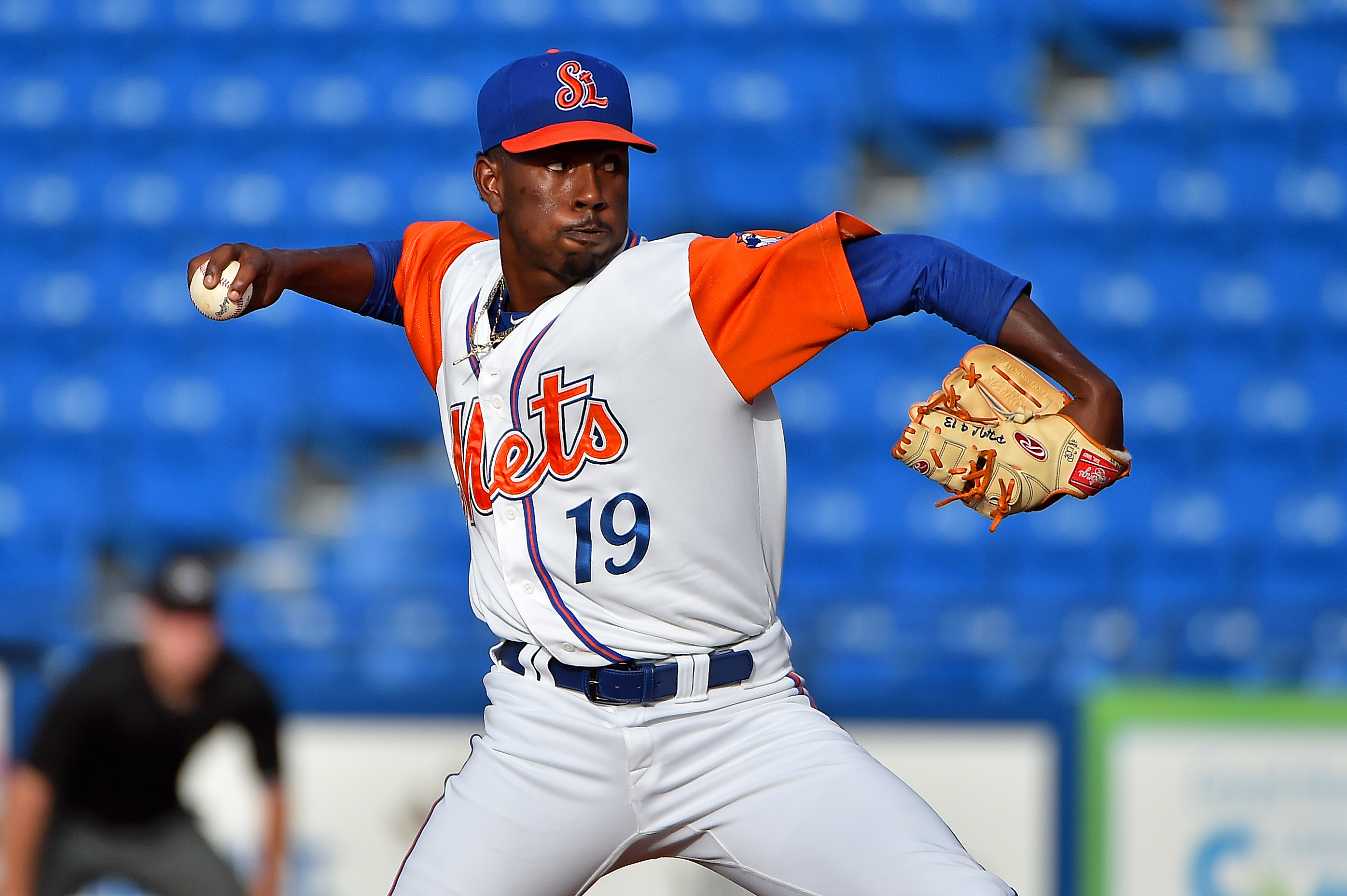
When the Mets hired Van Wagenen back in November, he made it clear his goal was to win now and win in the future. Van Wagenen started his run with a bunch of win now moves, including the big trade with the Seattle Mariners to land Robinson Cano and Edwin Diaz. That deal cost the Mets two of their most recent first round picks, right hander Justin Dunn and outfielder Jarred Kelenic, but many figured the trade would be justified as the first step in a series of win now moves. Van Wagenen followed that trade by signing Jeurys Familia and Wilson Ramos in free agency to fill two more big holes, but he followed that by strangely declaring the Mets were the favorites in the National League East despite having more needs to address. That announcement, which came at the press conference introducing Ramos, also included a statement that the Mets still had “real money” to spend.
Since that day, the Mets haven’t signed a major league free agent but have been signing players to minor league deals, like Gregor Blanco, Rajai Davis, Arquimedes Caminero, Hector Santiago, and Zach Lee. Those moves went to address organizational depth, which is fine since most of the Mets’ top talent is at the lower levels of the minor leagues. That plan continued this weekend, when Van Wagenen made three trades to improve the fringes of his roster while sending out some valuable minor league pieces in the process.
The first move was the Keon Broxton trade, which saw the Mets move on from Bobby Wahl while also parting with righty Adam Hill, their fourth round pick in the 2018 draft, and infielder Felix Valerio. The deal, on its own, has merits since Broxton is an excellent defender in center field and has a 20/20 season under his belt already, with some viewing him as a potential replacement for Juan Lagares (and his $9 million salary). The Mets, however, are planning on platooning the pair, which makes little sense since they are virtually the same player.
The moves the Mets made yesterday also make little sense. The Mets started the day by trading with the Houston Astros for 26 year old infielder J.D. Davis and minor leaguer Cody Bohanek from Houston in exchange for three more prospects: Luis Santana, Ross Adolph, and Scott Manea. Adolph, a 19 year old outfielder, was the Mets’ 12th round pick in 2018 and had a strong debut season in Brooklyn. Santana, who FanGraphs was preparing to rate as the Mets’ 10th best prospect prior to the trade being finalized, is a high upside middle infielder who spent last season hitting .348 with a .446 on base percentage in Low-A Kingsport. Manea, a catching prospect, has already drawn rave reviews from Astros’ GM Jeff Luhnow (tweet below courtesy of Astros’ beat reporter Chandler Rome).
[protected-iframe id=”29557a1ee100a50bb00e2923dc26ee88-142507471-123575294″ info=”twsrc%5Etfw” class=”twitter-tweet”]That’s right, the Astros’ GM is extremely complementary of the third player they got from the Mets in the deal, which is a good sign the Mets may have overpaid. The 26 year old Davis won the Pacific Coast League batting title last season, but he hit just .175 with a homer and five RBI’s in 103 big league at bats for the Astros last season. Davis has upside and was blocked at multiple positions in Houston, but according to many scouting reports he profiles like Wilmer Flores with the ability to play the corner outfield spots. That is a steep price to pay, in terms of prospects, to land a younger and cheaper version of Flores.
The Mets also dealt away catcher Kevin Plawecki yesterday for pitcher Walker Lockett and infielder Sam Haggerty, both of whom are now inside the organization’s top 20 prospects according to FanGraphs. Lockett gives the Mets’ starting pitching depth at the upper levels of the minor leagues while Haggerty had a decent year at AA, but this return seems light for Plawecki. While Plawecki was not going to play for the Mets following the acquisition of Ramos, they dealt away a guy capable of starting in the league (it says more about the state of catching than Plawecki’s ability) for two upper level minor leaguers with limited upside. The Mets gave away four low level minor leaguers with upside in exchange for Broxton, an infielder who could be a AAAA player, and another minor league infielder.
Since Van Wagenen has taken over, the Mets have dealt away five of their top 30 prospects (according to MLB.com’s rankings) and three of their top 12 draft picks from last season. The majority of those prospects have been at the low levels of the minor leagues, which makes sense since FanGraphs’ recent chart shows only eight of their top 25 prospects have played above A ball. The article also produced another alarming note, which was highlighted by MetsMerized Online’s Michael Mayer on Twitter.
[protected-iframe id=”6801758430b5beb955635c68fc3d7e82-142507471-123575294″ info=”twsrc%5Etfw” class=”twitter-tweet”]In essence, this means that the Mets aren’t committing enough resources to scouting, so that’s why they seemingly never take back low minors players with upside in trades. The Mets don’t know which players to find, so they instead insist on guys closer to the big leagues with a more limited upside. This fits the Van Wagenen model of trying to win right now since the majority of the prospects he have traded are at least 3 or 4 years away from contributing at the big league level. These players won’t help the Mets win now, so getting valuable depth to help protect against injury is something.
The risk Van Wagenen is running is that he is robbing Peter to pay Paul, punting several potentially valuable future trade chips (at minimum) in order to address his needs right now. It’s fair to say that Van Wagenen may not value these prospects as much as Alderson did because he didn’t sign them, but unless his team produces a quality draft and international free agent signings the Mets could be in deep trouble in a few years. This philosophy is made even more strange because the pieces Van Wagenen is acquiring at a high prospect cost are depth pieces that could be added via free agency.
This goes back to ownership, which claimed at the start of the offseason that they wanted to win right now. Saying they want to win now is one thing, but the Mets haven’t acted like it by refusing to even meet with the two generational free agents on the market or increasing payroll beyond 2018 levels. The Cano trade was a cash neutral trade for 2019 and the Mets have paid $49 million in free agency for Familia and Ramos. The Mets still need several more bullpen pieces, a starter in the outfield (Lagares and Broxton isn’t good enough), depth in the rotation, and someone who can play shortstop when Amed Rosario needs a day off.
That is an awful lot of holes for a team that wants to win now, and instead of filling them with big league free agents Van Wagenen has been forced to trade prospects for cheap depth pieces. It’s hard to fault Van Wagenen given how little wiggle room he has been given by the Wilpon’s, who clearly have refused to raise payroll much beyond their $155 million outlay from the start of 2018. Van Wagenen also has the anchors of almost $45 million in dead money on his 2019 payroll thanks to the deals for David Wright and Yoenis Cespedes, even though the Mets are collecting insurance on both contracts that has yet to be reinvested. When you have that little room to work with and are given a mandate to win now, this explains why valuable prospects are going out the door for fringe major leaguers. Van Wagenen is doing his best to make the most out of a bad situation, but the Wilpon’s refusal to simply spend top dollar to land premium players will continue to bite the franchise in the long run.
Add The Sports Daily to your Google News Feed!
